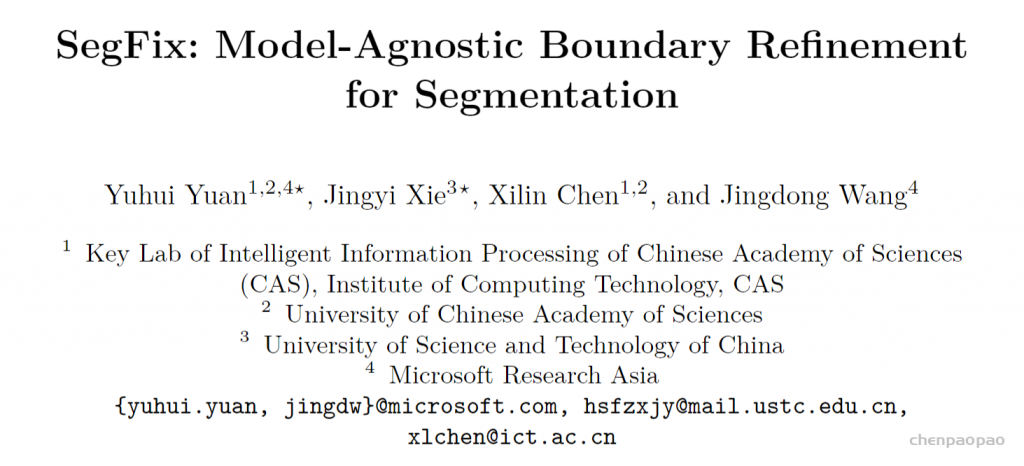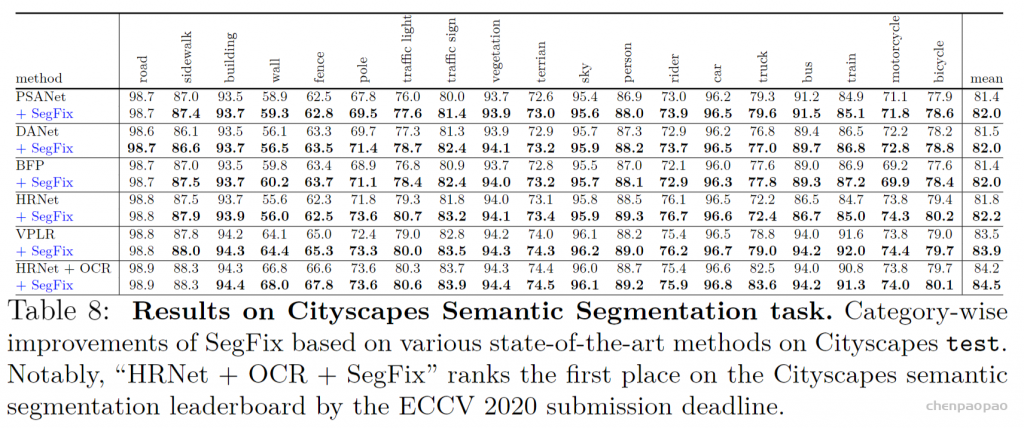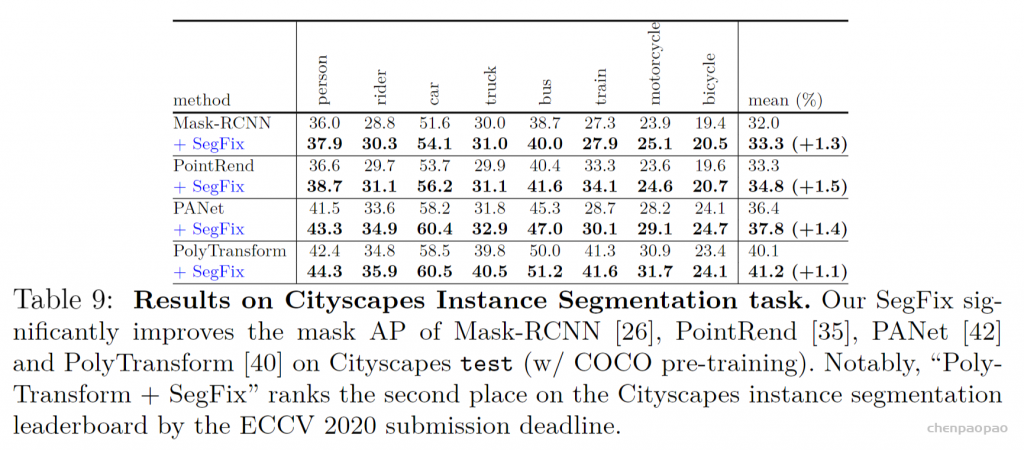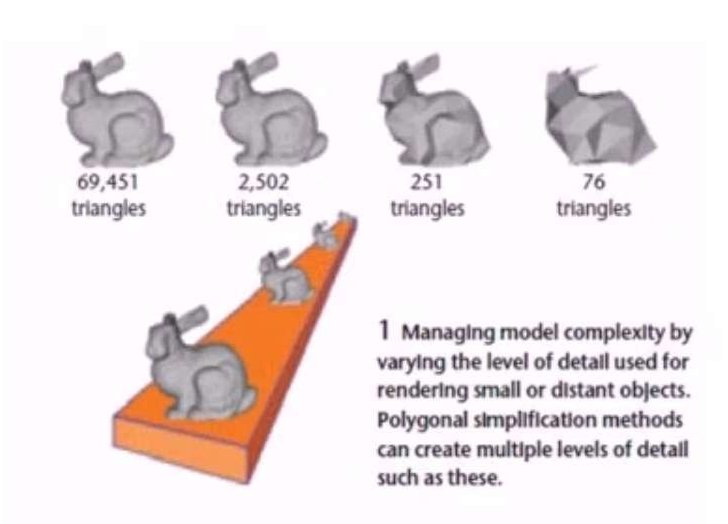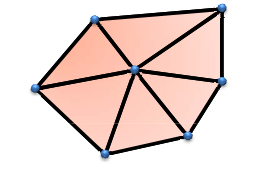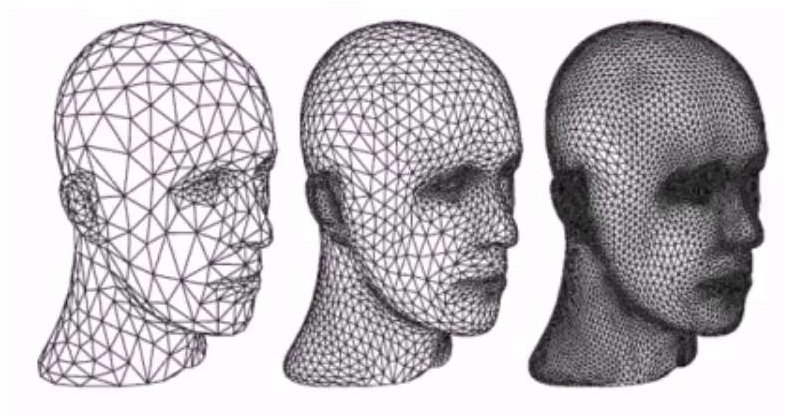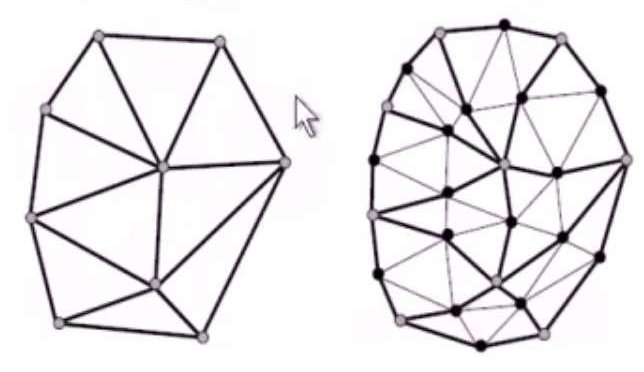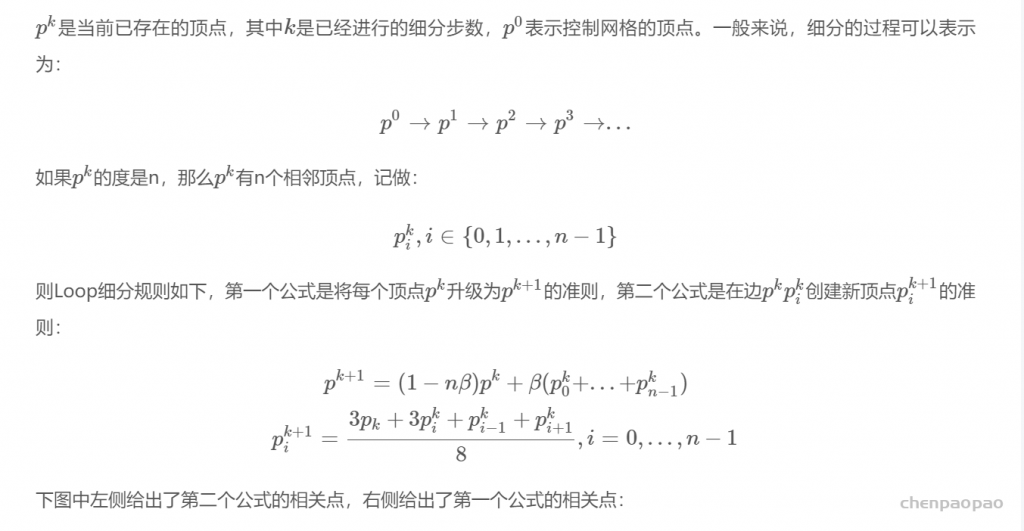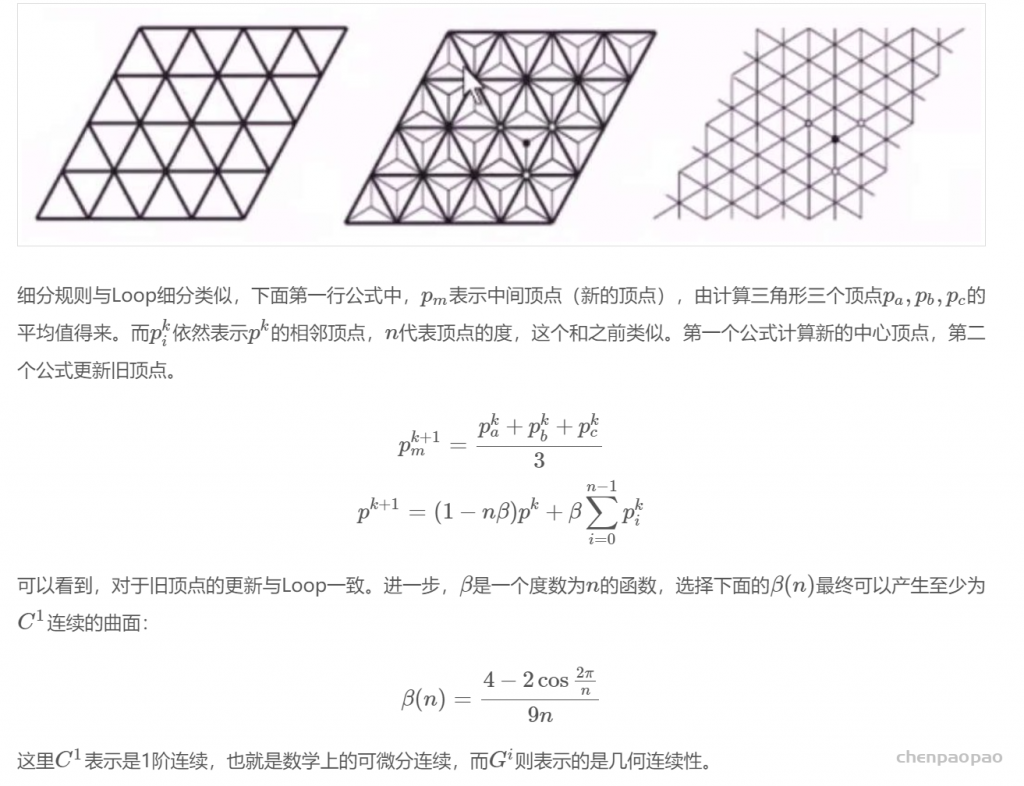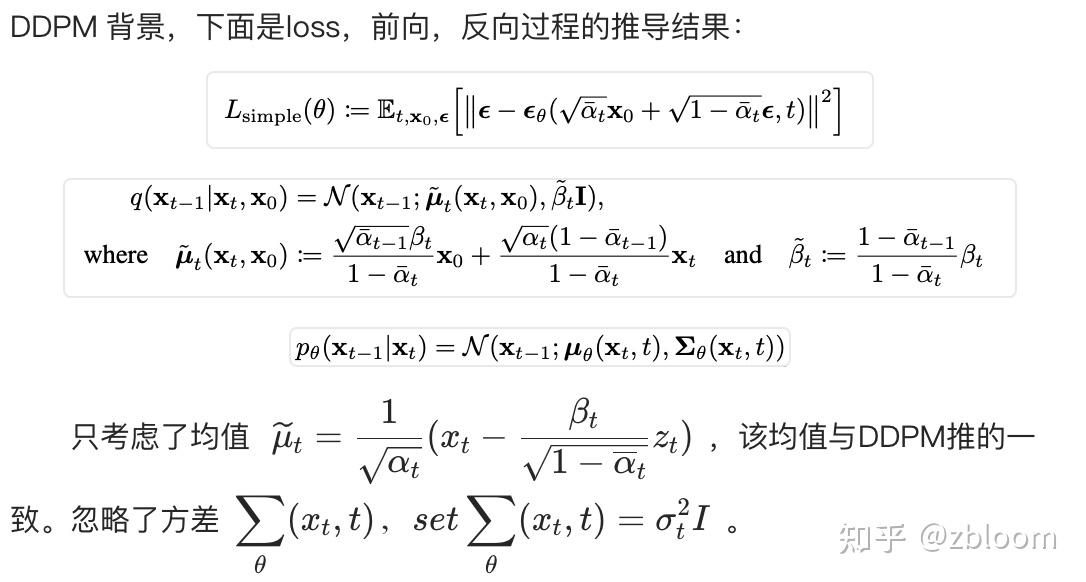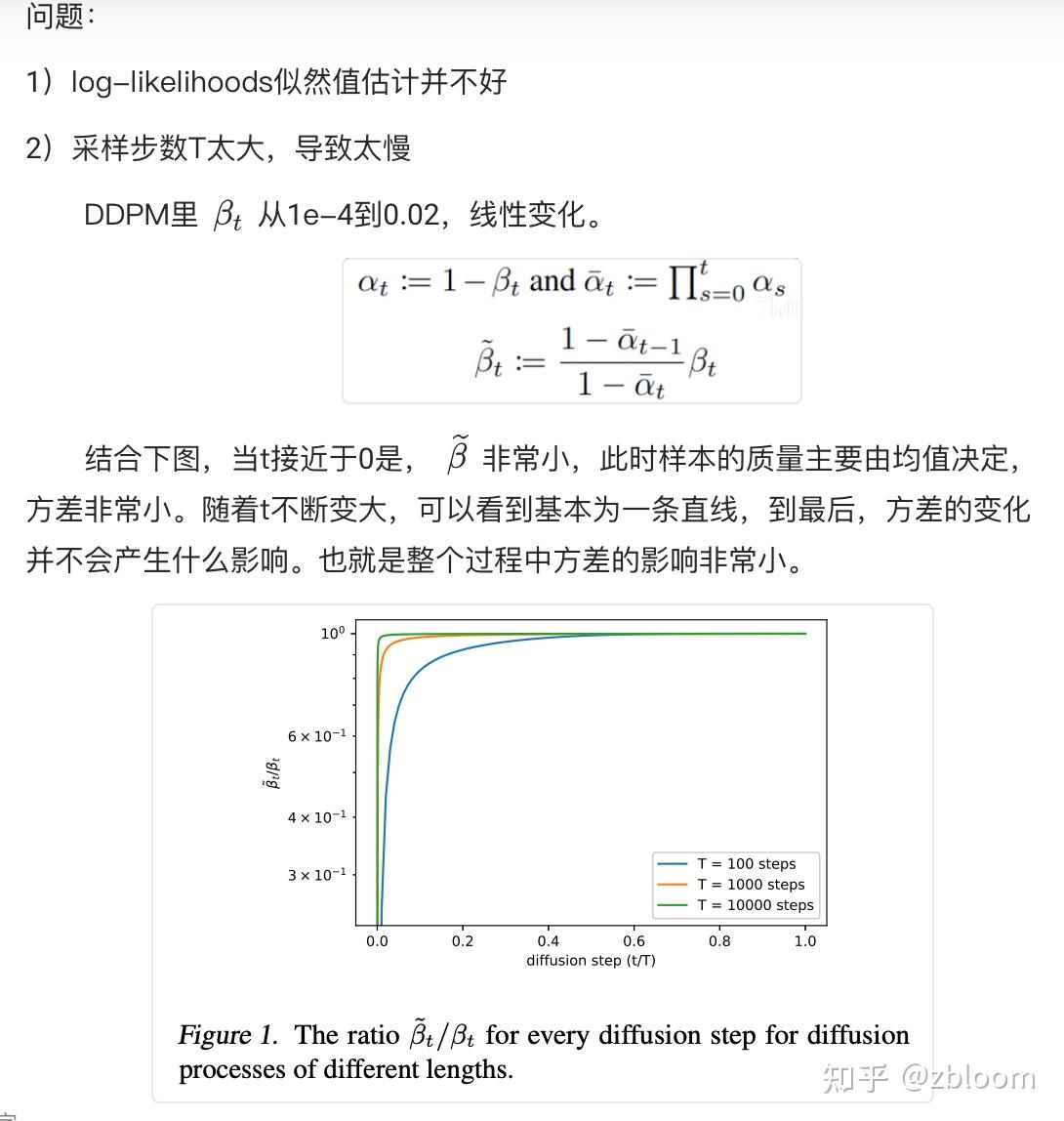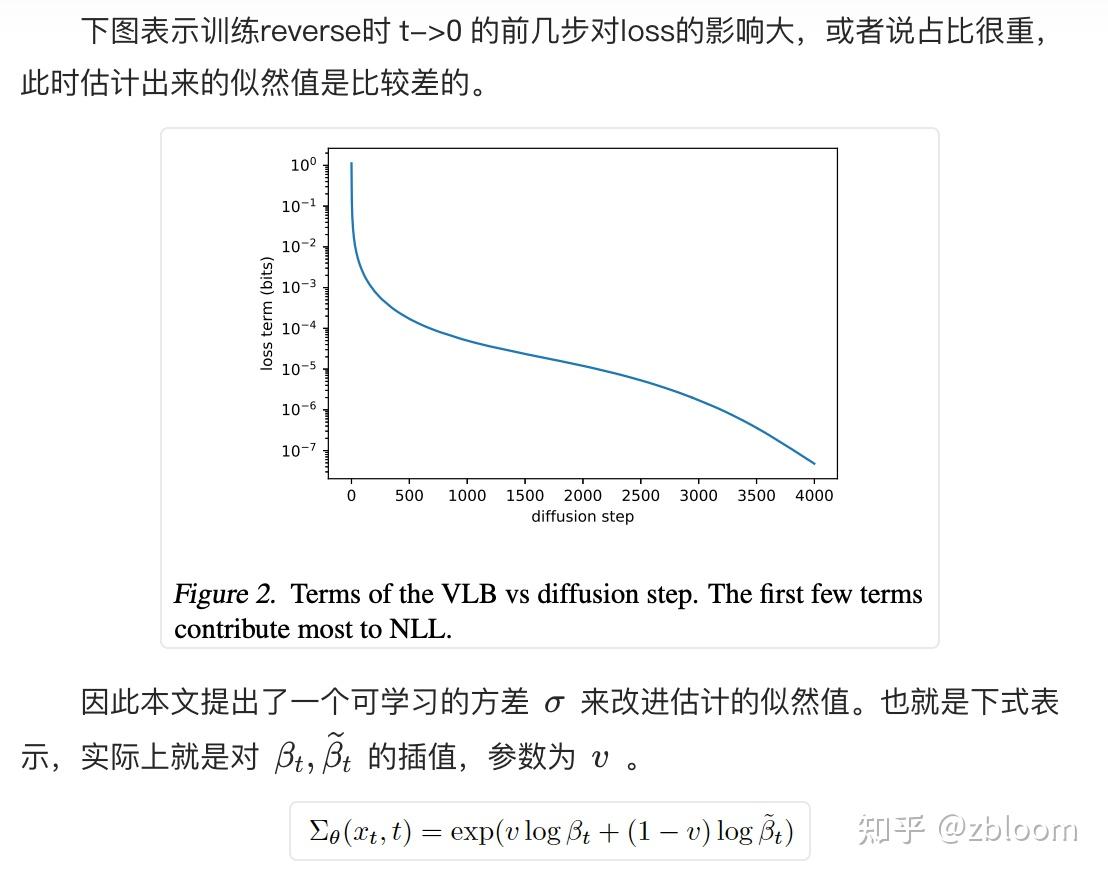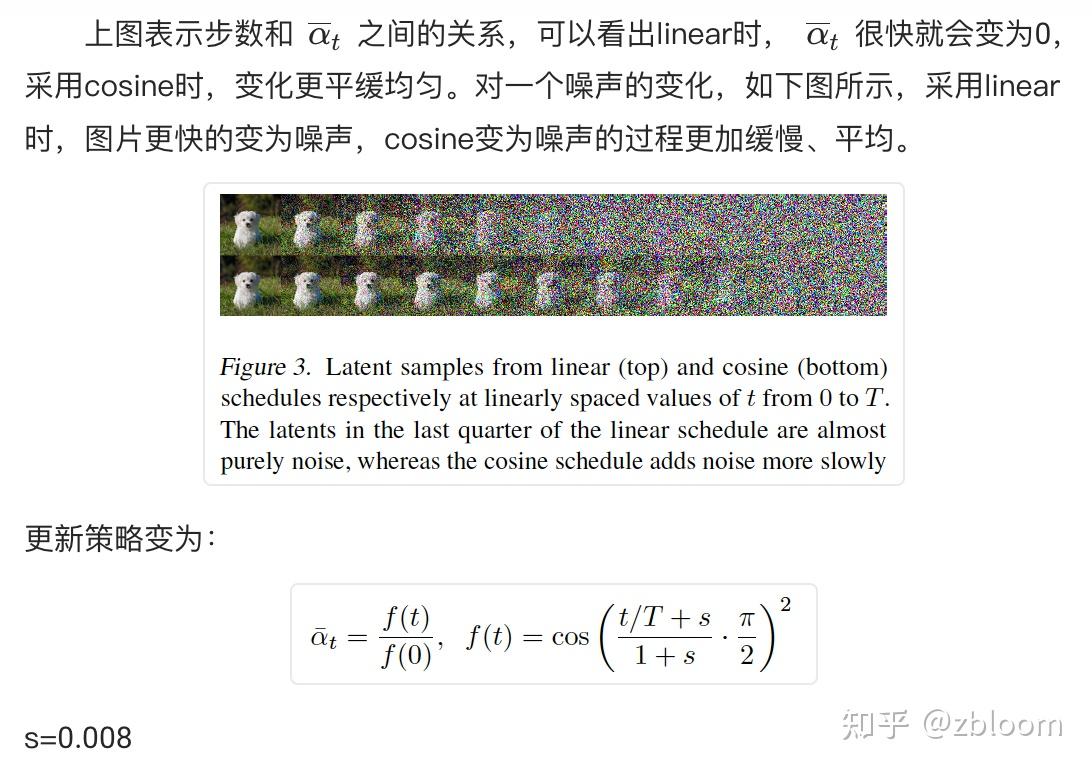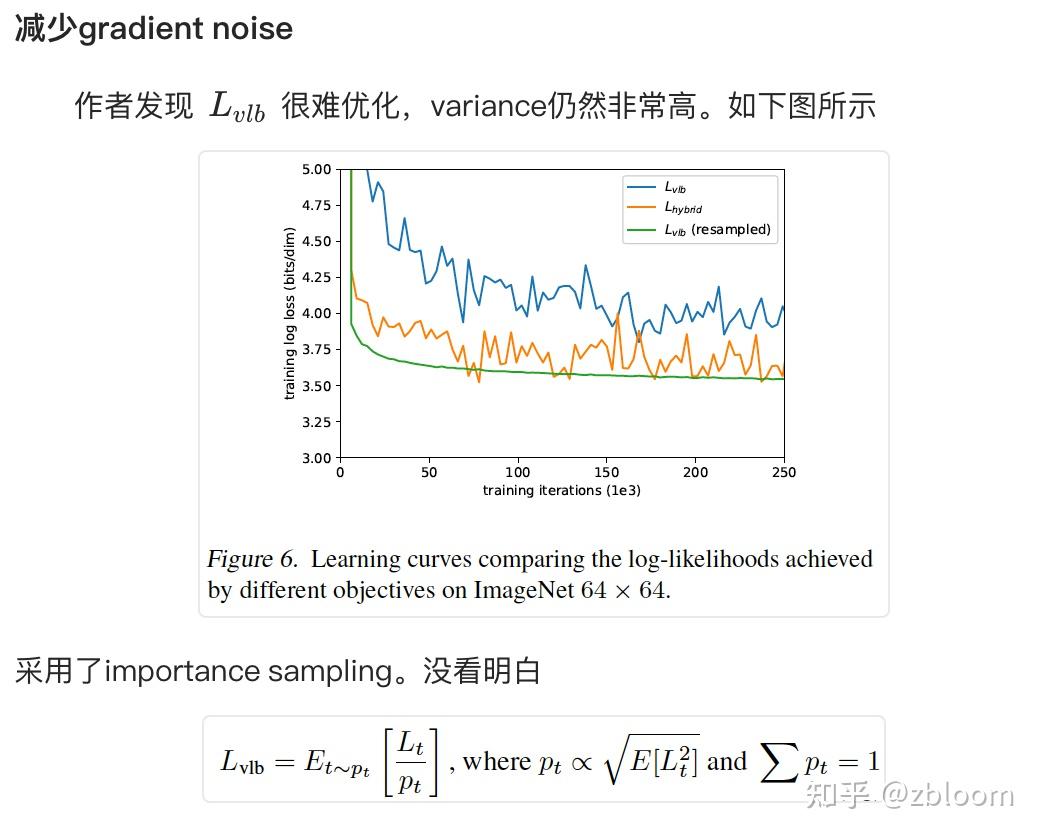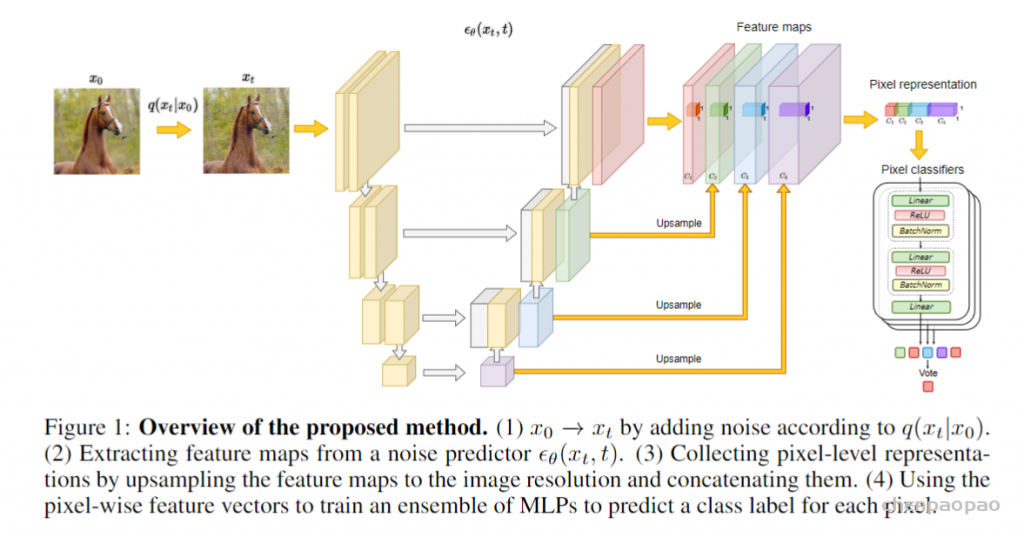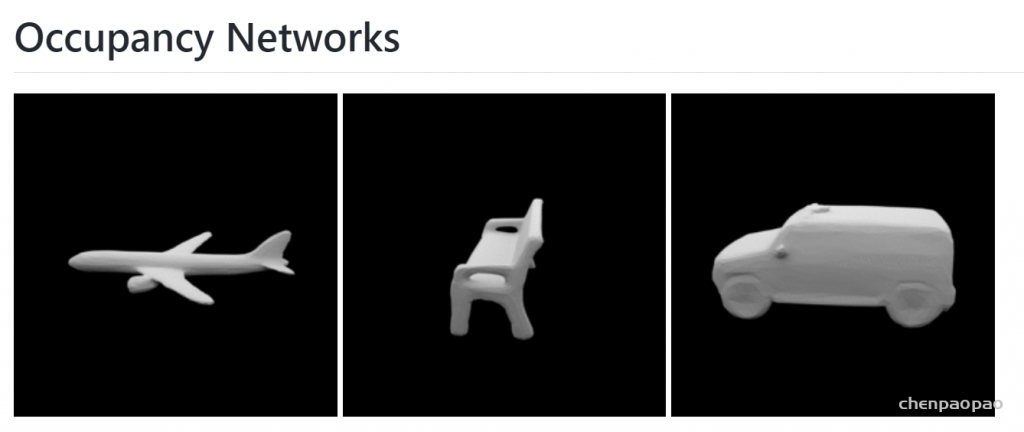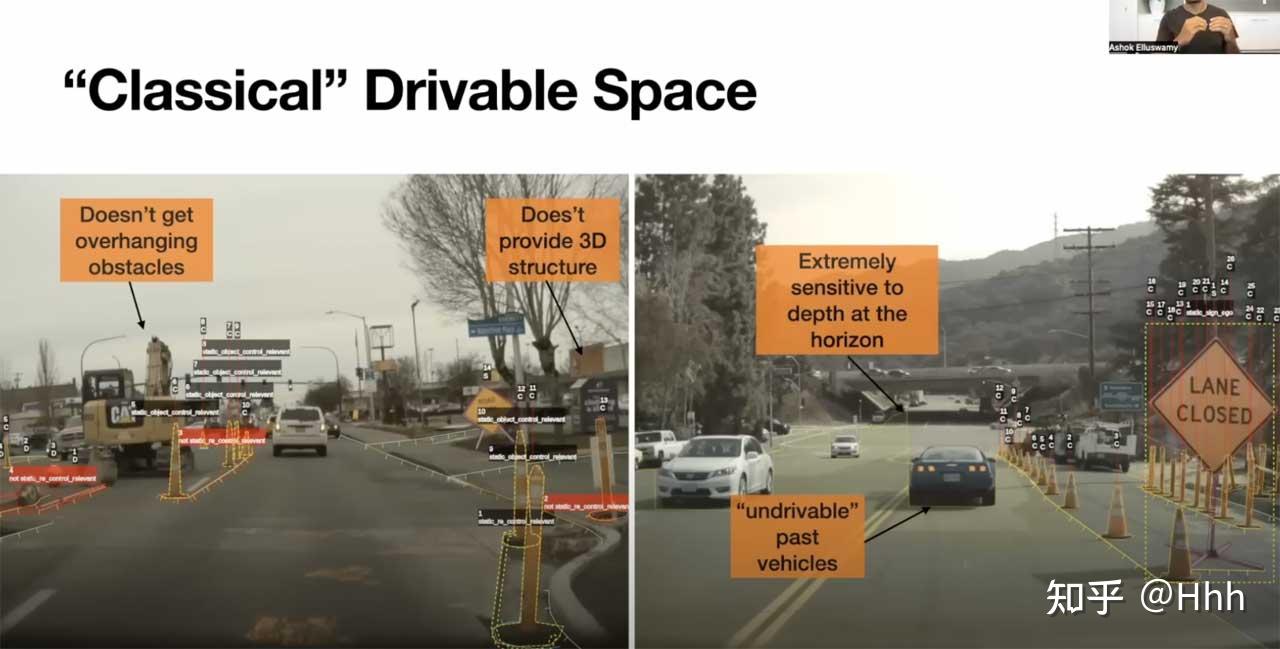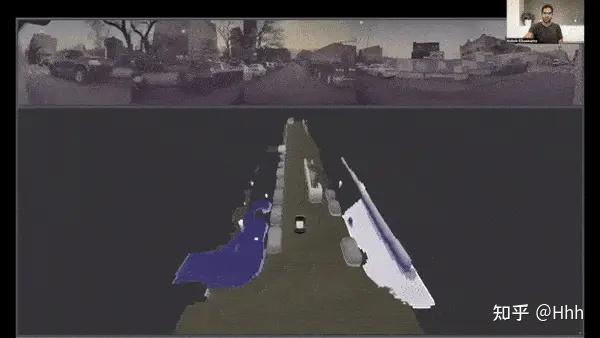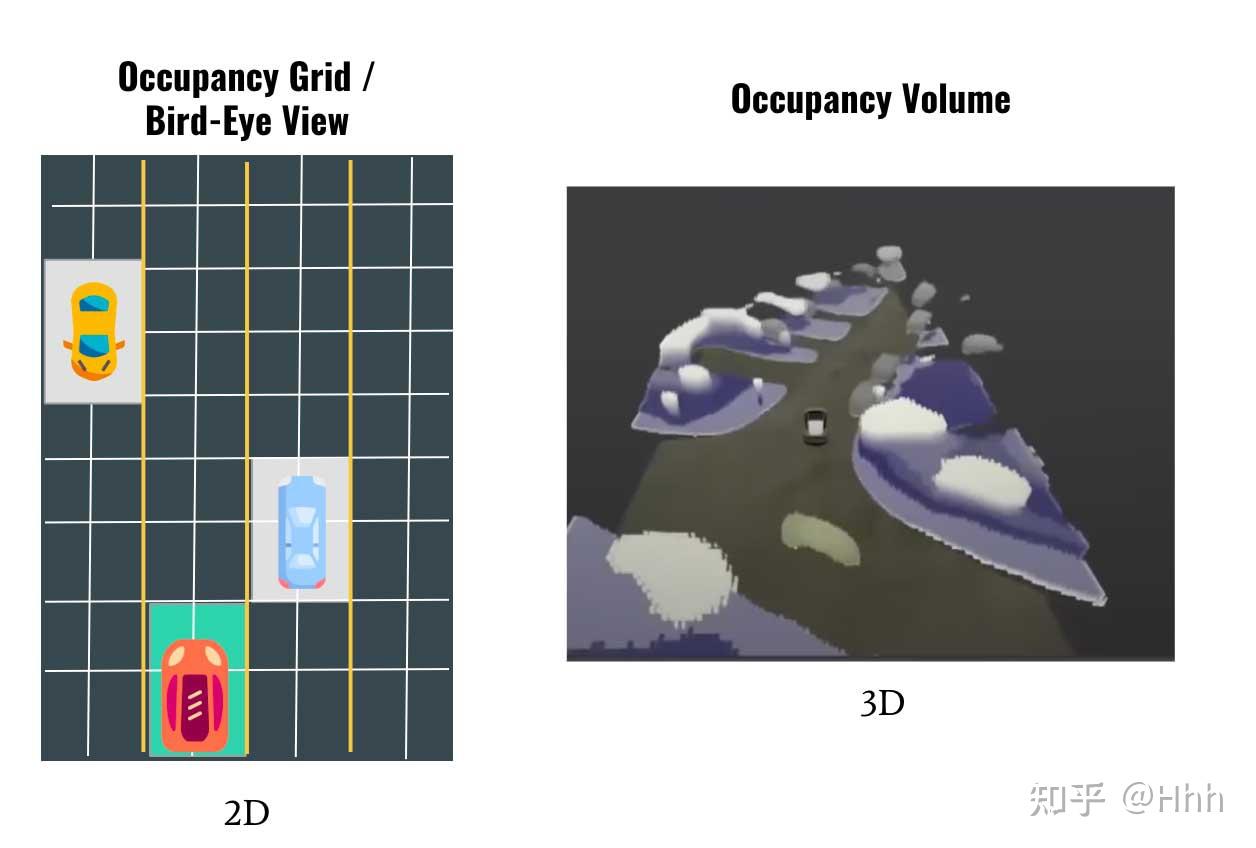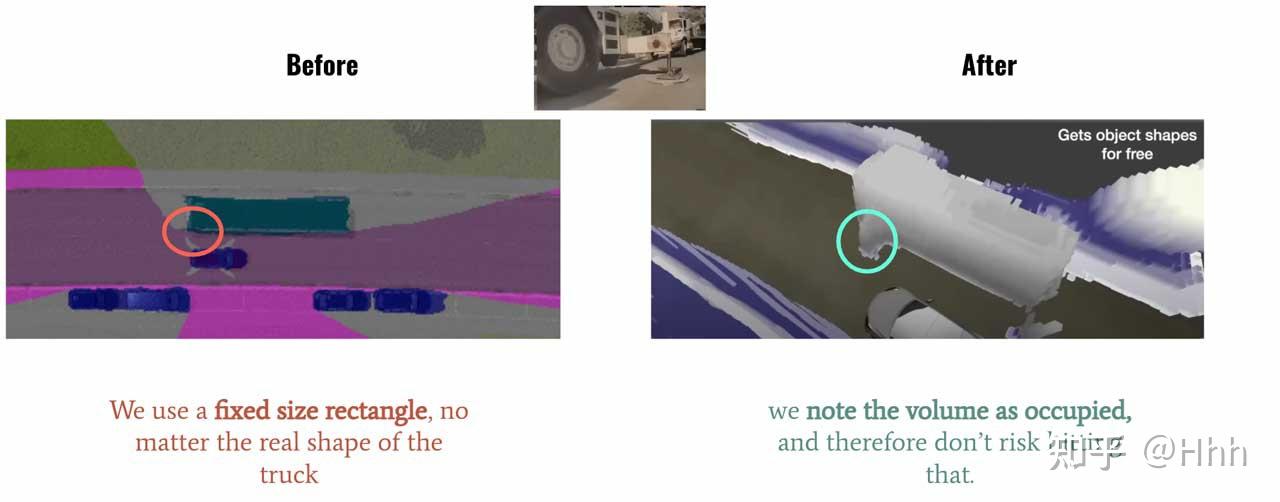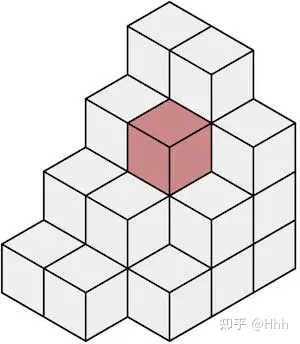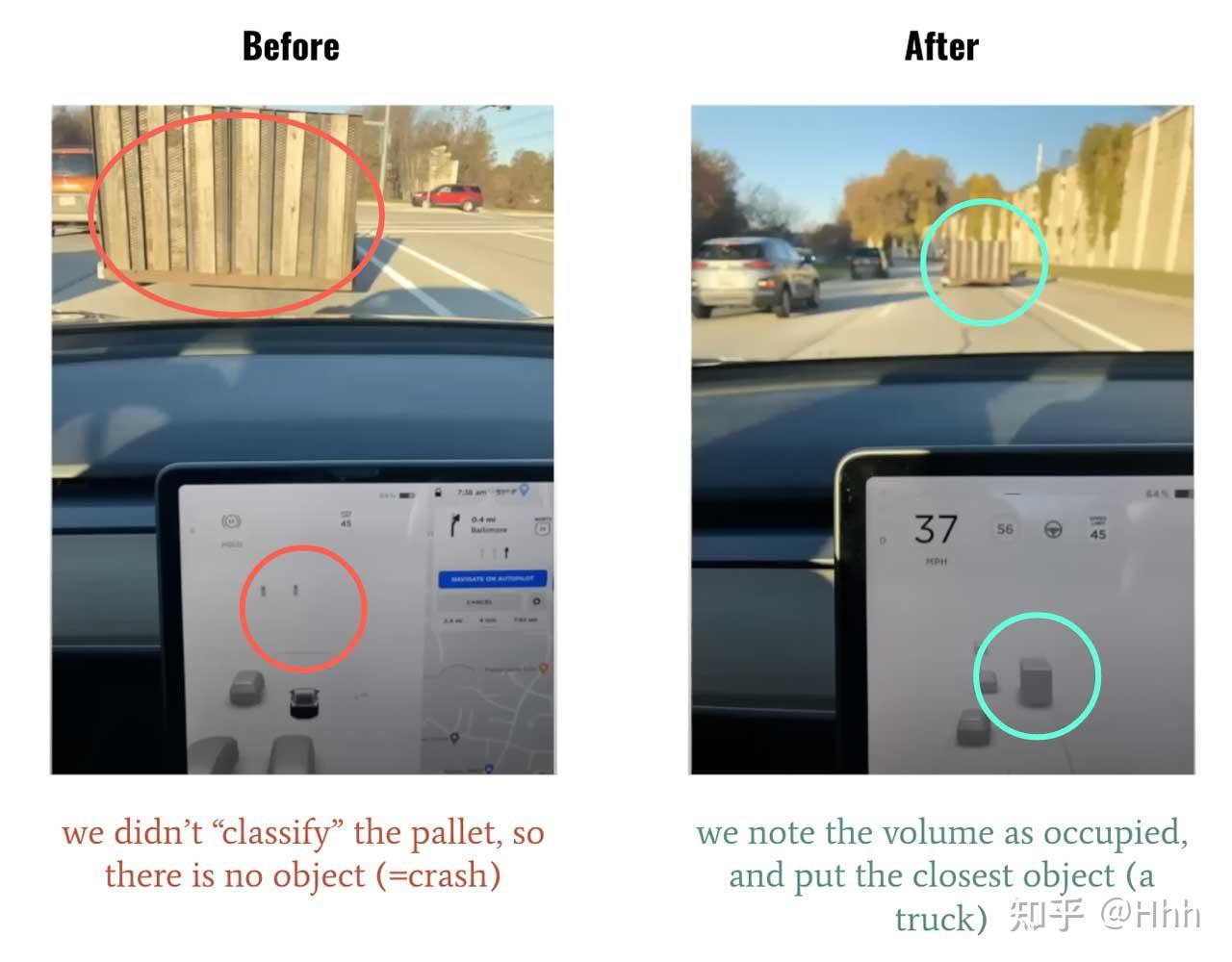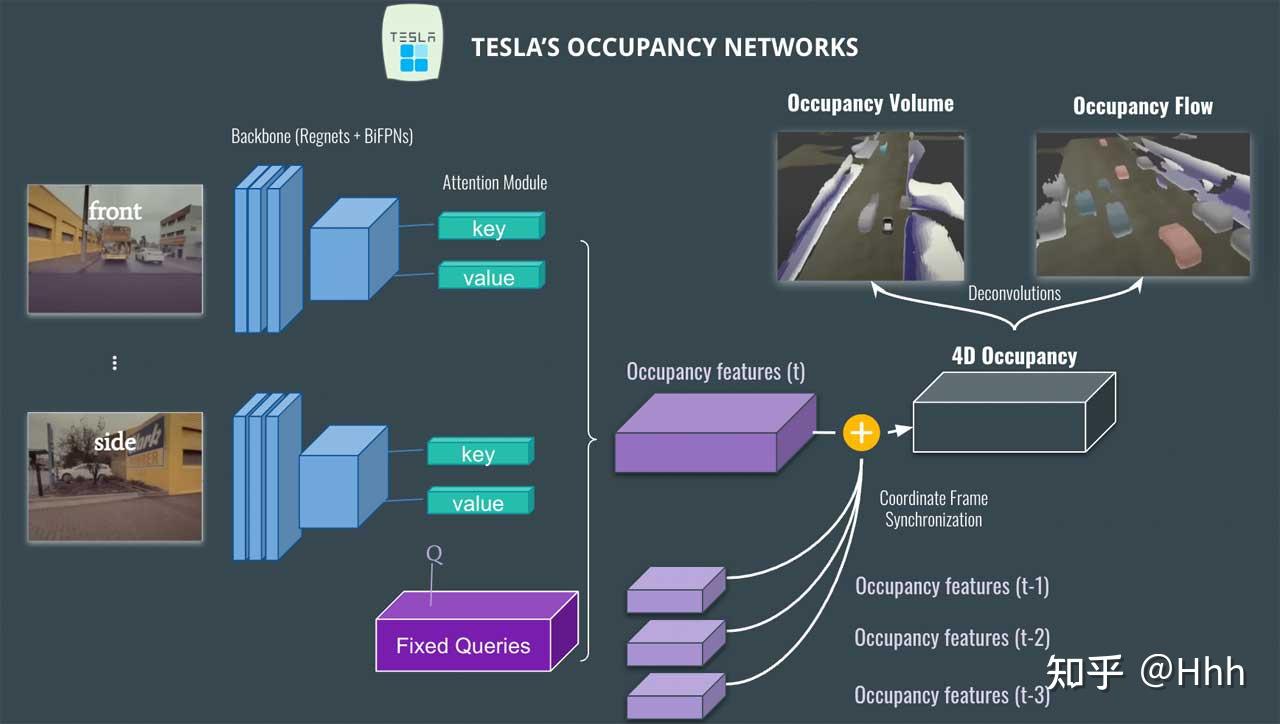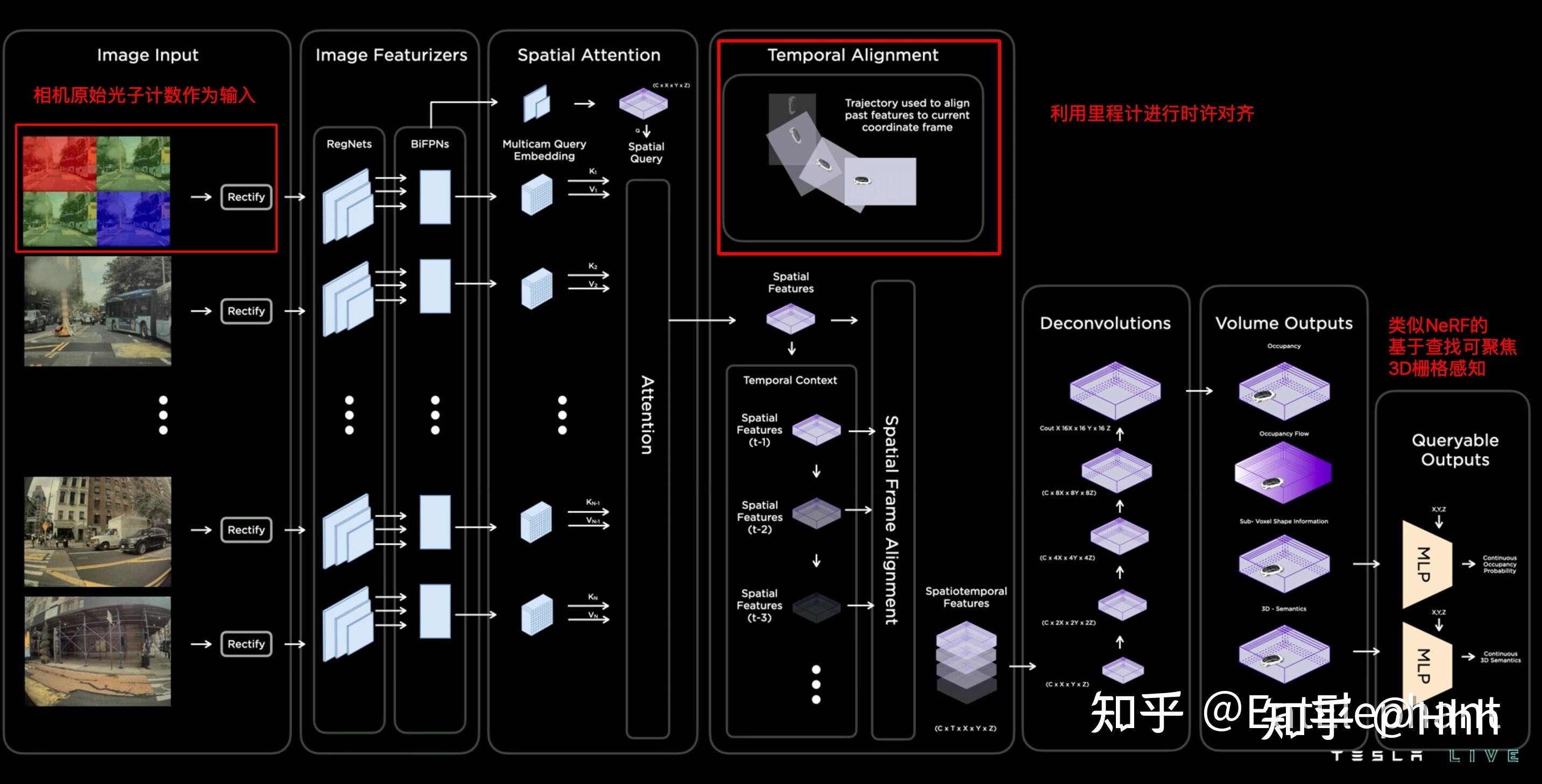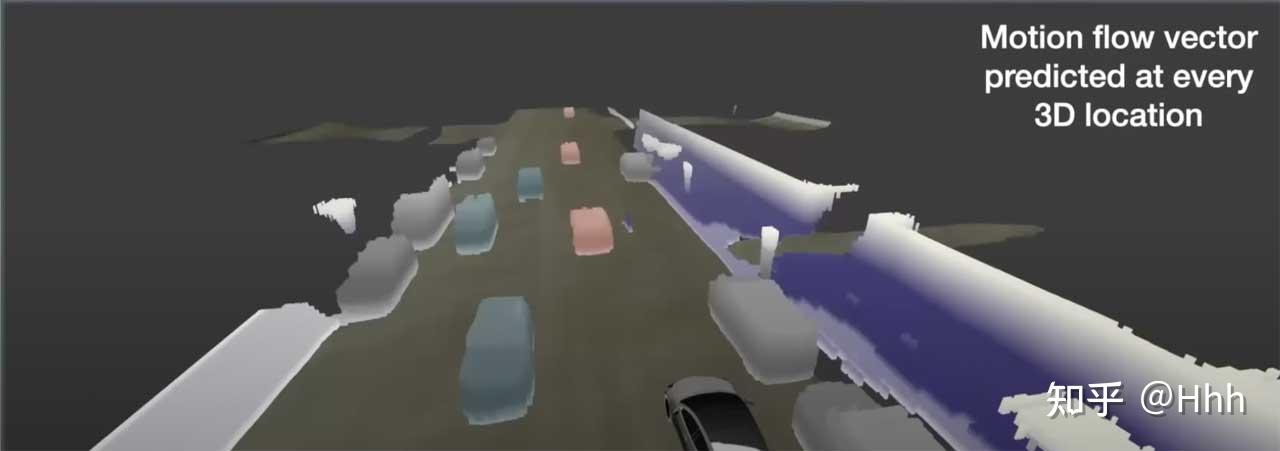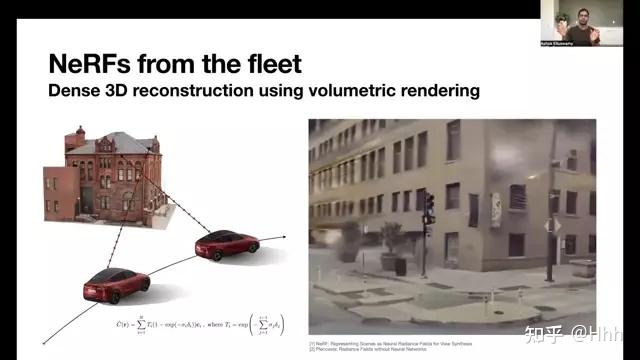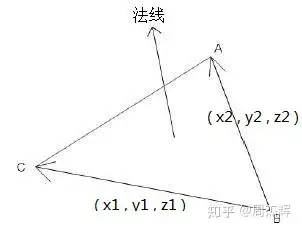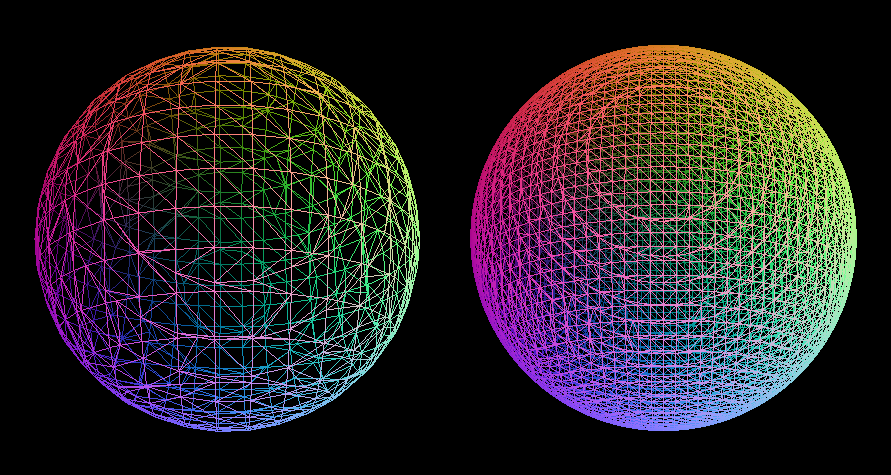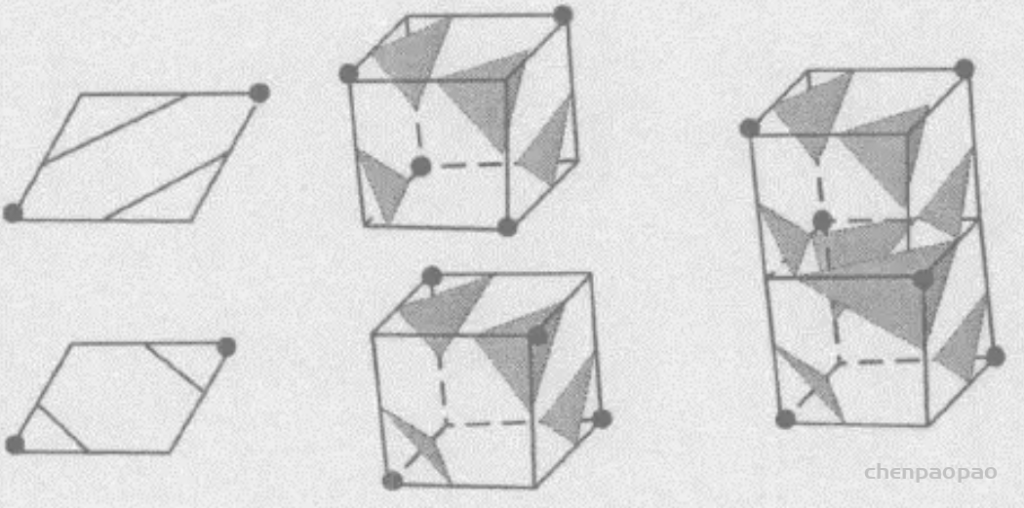
Image Segmentation Using Text and Image Prompts (CVPR 2022).
论文地址:https://arxiv.org/abs/2112.10003
代码地址:https://github.com/timojl/clipseg
图像分割通常是通过为一组固定的对象类训练模型来解决的。之后合并其他类或更复杂的查询是昂贵的,因为它需要在包含这些表达式的数据集上重新训练模型。在本文中,作者提出了一个可以在测试时根据任意prompt生成图像分割的系统。prompt可以是文本或图像。这种方法使模型能够为三个常见的分割任务创建一个统一的模型(只训练一次),这些任务具有不同的挑战:引用表达式分割、zero-shot分割和one-shot分割。本文以 CLIP 模型为骨干,使用基于Transformer的解码器进行扩展,以实现密集预测。在对 PhraseCut 数据集的扩展版本进行训练后,本文的系统会根据自由文本prompt或表达查询的附加图像为图像生成二进制分割图。这种新颖的混合输入不仅可以动态适应上述三个分割任务,还可以适应任何可以制定文本或图像查询的二进制分割任务。最后,作者发现本文的系统能够很好地适应通用查询。
图像分割需要一个模型来输出每个像素的预测。与图像分类相比,分割不仅需要预测可以看到的内容,还需要预测可以找到的位置。经典语义分割模型仅限于分割训练集中的类别。目前,已经出现了不同的方法来扩展这种相当受限的设置:
1)在广义的zero-shot分割中,需要通过将未见类别与已见类别相关联来分割已见和未见类别。
2)在one-shot分割中,除了要分割的查询图像之外,还以图像的形式提供所需的类。
3)在引用表达式分割(RES)中,模型在复杂的文本查询上进行训练,但在训练期间可以看到所有类(即没有对未见过的类进行泛化)。

在这项工作中,作者引入了 CLIPSeg 模型(如上图),该模型能够基于任意文本查询或图像进行分割。 CLIPSeg 可以解决上述所有三个任务。这种多模态输入格式超越了现有的多任务基准,例如 Visual Decathlon,其中输入始终以图像的形式提供。为了实现这个系统,作者使用预训练的 CLIP 模型作为主干,并在顶部训练一个轻量的条件分割层(解码器)。作者使用CLIP 的联合文本-视觉嵌入空间来调节本文的模型,这使模型能够处理文本形式的prompt以及图像。本文的想法是教解码器将 CLIP 内的激活与输出分割相关联,同时允许尽可能少的数据集偏差并保持 CLIP 的出色和广泛的预测能力。
本文采用通用的二进制预测设置,其中与prompt匹配的前景必须与背景区分开来。这种二进制设置可以适应Pascal zero-shot分割所需的多标签预测。虽然本文工作的重点是建设一个通用模型,作者发现 CLIPSeg 在三个low-shot分割任务中实现了竞争性能。此外,它能够泛化到它从未见过分割的类和表达式。
本文的主要技术贡献是 CLIPSeg 模型,它通过提出一种基于Transformer的轻量级解码器,扩展了著名的 CLIP Transformer用于zero-shot和one-shot分割任务。该模型的一个关键新颖之处在于分割目标可以通过不同的方式指定:通过文本或图像。这使模型能够为多个基准训练一个统一的模型。对于基于文本的查询,与在 PhraseCut 上训练的网络不同,本文的模型能够泛化到涉及看不见的单词的新查询。对于基于图像的查询,作者探索了各种形式的视觉prompt 工程——类似于语言建模中的文本prompt 工程。
方法

作者使用基于视觉Transformer的 (ViT-B/16) CLIP模型作为主干,并使用小型、参数高效的Transformer解码器对其进行扩展。解码器在自定义数据集上进行训练以执行分割,而 CLIP 编码器保持冻结状态。一个关键的挑战是避免在分割训练期间对预测施加强烈的bias并保持 CLIP 的多功能性。
考虑到这些需求,作者提出了 CLIPSeg:一个简单的、纯基于Transformer的解码器。当查询图像通过 CLIP 视觉Transformer时,某些层 S 的激活被读取并投影到解码器的token嵌入大小 D。然后,这些提取的激活(包括 CLS token)在每个Transformer之前添加到解码器的内部激活中。
解码器具有与提取的 CLIP 激活一样多的Transformer块。解码器通过在其Transformer(最后一层) 的token上应用线性投影来生成二进制分割,其中 P 是 CLIP 的patch大小。为了告知解码器分割目标,作者使用 FiLM通过条件向量调制解码器的输入激活。
这个条件向量可以通过两种方式获得:(1) 使用文本查询的 CLIP 文本Transformer嵌入和 (2) 在特征工程prompt图像上使用 CLIP 视觉Transformer。CLIP 本身没有经过训练,仅用作冻结特征提取器。由于紧凑的解码器,对于 D = 64,CLIPSeg 只有 1,122,305 个可训练参数。
由于学习到的位置嵌入,原始 CLIP 被限制为固定的图像大小。本文通过插入位置嵌入来启用不同的图像大小(包括更大的图像)。为了验证这种方法的可行性,作者比较了不同图像尺寸的预测质量,发现对于大于 350 像素的图像,ViT-B/16 的性能只会降低。
在本文的实验中,作者使用 CLIP ViT-B/16,patch大小 P 为 16,如果没有另外说明,则使用 D = 64 的投影尺寸。作者在 S = [3 , 7 , 9] 层提取 CLIP 激活,因此本文的解码器只有三层。
模型通过条件向量接收有关分割目标的信息(“要分割什么?”),这可以通过文本或图像(通过视觉prompt工程)提供。由于 CLIP 为图像和文本标题使用共享嵌入空间,可以在嵌入空间和插值向量上的条件之间进行插值。形式上,设是支持图像的嵌入,是样本 i 的文本嵌入,作者通过线性插值获得条件向量 ,其中 a 是从[0 , 1]均匀采样 。作者在训练期间使用这种随机插值作为数据增强策略。
1 PhraseCut + Visual prompts (PC+)
本文使用 PhraseCut 数据集,其中包含超过 340,000 个具有相应图像分割的短语。最初,该数据集不包含视觉支持,而仅包含短语,并且每个短语都存在相应的对象。作者以两种方式扩展这个数据集:视觉支持样本和负样本。为了为prompt p 添加视觉支持图像,作者从共享prompt p 的所有样本的集合Sp中随机抽取。
此外,作者将负样本引入数据集,即没有对象与prompt匹配的样本。为此,样本的短语被替换为概率为qneg的不同短语。短语使用一组固定前缀随机扩充。在考虑到对象位置的情况下,作者在图像上应用随机裁剪,确保对象至少部分可见。在本文的其余部分,将此扩展数据集称为 PhraseCut+(缩写为 PC+)。与仅使用文本来指定目标的原始 PhraseCut 数据集相比,PC+ 支持使用图像-文本插值进行训练。这样,本文可以训练一个对文本和视觉输入进行操作的联合模型。
2 Visual Prompt Engineering
在传统的基于 CNN 的one-shot语义分割中,masked pooling 已成为计算用于条件的原型向量的标准技术。提供的支持mask被下采样并与来自 CNN 沿空间维度的后期特征图相乘,然后沿空间维度汇集。这样,只有与支持对象有关的特征才被考虑在原型向量中。
这种方法不能直接应用于基于Transformer的架构,因为语义信息也在整个层次结构中的 CLS token中积累,而不仅仅是在特征图中。绕过 CLS token并直接从特征图的masked pooling中导出条件向量也是不可能的,因为它会破坏文本嵌入和 CLIP 视觉嵌入之间的兼容性。
为了更多地了解如何将目标信息整合到 CLIP 中,作者在一个没有分割的简单实验中比较了几个变体及其混杂效应。作者考虑视觉和基于文本的嵌入之间的余弦距离(对齐),并使用原始 CLIP 权重而无需任何额外的训练。
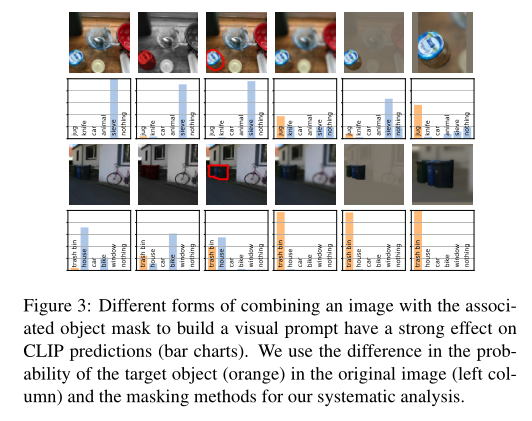
具体来说,作者使用 CLIP 来计算对应于图像中对象名称的文本嵌入ti。然后,将它们与原始图像的视觉嵌入s0和使用修改后的 RGB 图像或注意力mask突出显示目标对象的视觉嵌入sh进行比较。通过对对齐向量[sht0,sht1,…]进行softmax,获得了如上图所示的分布。
对于定量分数,作者只考虑目标对象名称嵌入t0,希望它与突出显示的图像嵌入sh比与原始图像嵌入s0具有更强的对齐。这意味着,如果突出显示技术改进了对齐方式,则对象概率的增加应该很大。作者基于LVIS 数据集进行分析,因为它的图像包含多个对象和一组丰富的类别。
CLIP-Based Masking

直接等效于视觉Transformer中的masked pooling是将mask应用于token。通常,视觉Transformer由一组固定的token组成,这些token可以通过多头注意力在每一层进行交互:用于读取的 CLS token和最初从图像patch中获得的与图像区域相关的token。
现在,可以通过将一个或多个Transformer层的交互约束到mask内patch token以及仅 CLS token来合并mask。上表(左)表明这种引入mask的形式效果不佳。通过限制与 CLS token的交互(上表 左,顶部两行),仅实现了小的改进,而限制所有交互会显着降低性能。由此得出结论,在内部结合图像和mask需要更复杂的策略。
Visual Prompt Engineering
除了在模型中应用mask,还可以将mask和图像组合成一个新图像,然后由视觉Transformer处理。类似于 NLP 中的prompt工程(例如在 GPT-3 中),作者将此过程称为视觉prompt工程。由于这种形式的prompt设计是新颖的,并且在这种情况下表现最好的策略是未知的,作者对设计视觉prompt的不同变体进行了广泛的评估。
发现mask和图像如何组合的确切形式非常重要。作者确定了三种图像操作来改善对象文本prompt和图像之间的对齐:降低背景亮度、模糊背景(使用高斯滤波器)和裁剪到对象。所有三者的组合表现最好。因此在其余部分,将使用这个变体。
实验

上表展示了在原始 PhraseCut 数据集上评估referring expression segmentation(RES)的性能对比。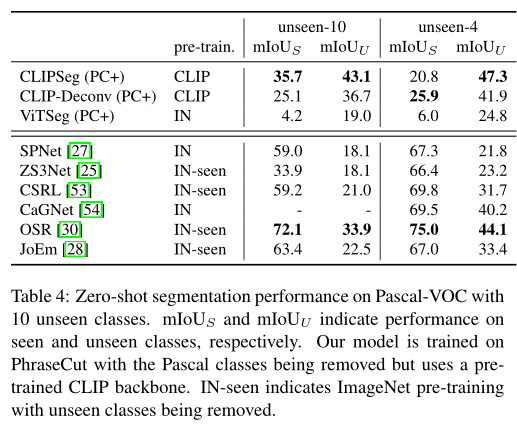
在广义zero-shot分割中,测试图像除了包含已知类别外,还包含以前从未见过的类别。作者使用 Pascal-VOC 基准评估模型的zero-shot分割性能,性能如上表。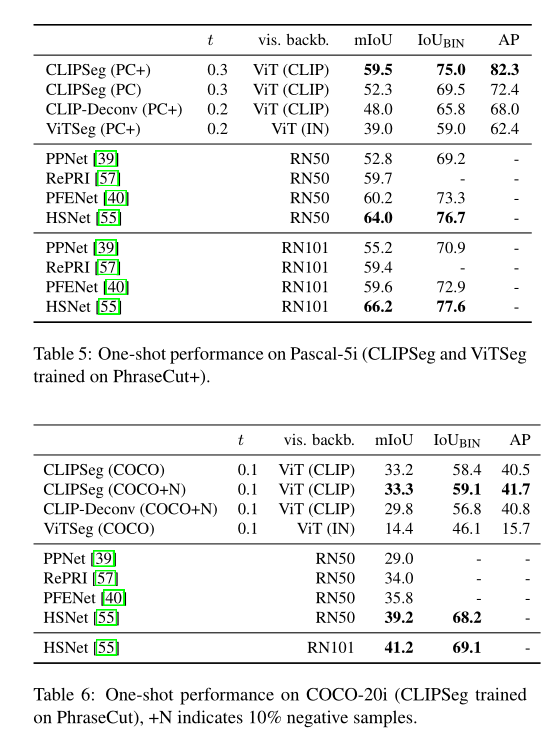
在 Pascal-5i 上,本文的通用模型 CLIPSeg (PC+) 在最先进的方法中实现了具有竞争力的性能,只有最近的 HSNet 表现更好。COCO-20i 上的结果表明 CLIPSeg 在除 PhraseCut(+) 之外的其他数据集上训练时也能很好地工作。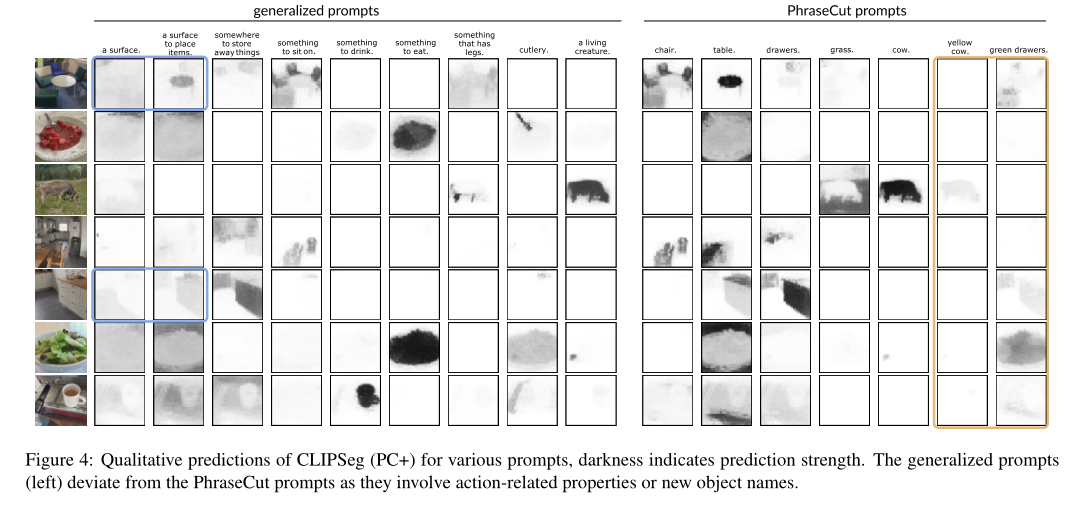
上图展示了CLIPSeg(PC+)对各种prompt的定性预测,深色表示预测强度。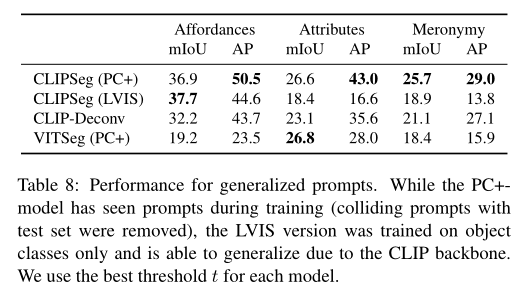
从上表中,可以发现在 PC+ 上训练的 CLIPSeg 版本的性能优于 CLIP-Deconv baseline和在 L VIS 上训练的版本,后者仅包含对象标签而不是复杂的短语。这一结果表明,数据集的可变性和模型的复杂性都是泛化所必需的。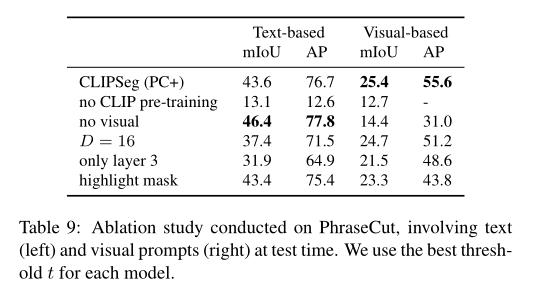
为了确定 CLIPSeg 性能的关键因素,作者对 PhraseCut 进行了消融研究。,如上表所示,作者分别评估基于文本和基于视觉prompt的性能以获得完整的图片。当使用随机权重而不是 CLIP 权重时(“无 CLIP 预训练”),基于文本的性能和视觉性能都会下降。当参数数量减少到 16 个(“D = 16”)时,性能大幅下降,这表明解码器中信息处理的重要性。使用不利的视觉prompt技术会降低视觉输入的性能。

